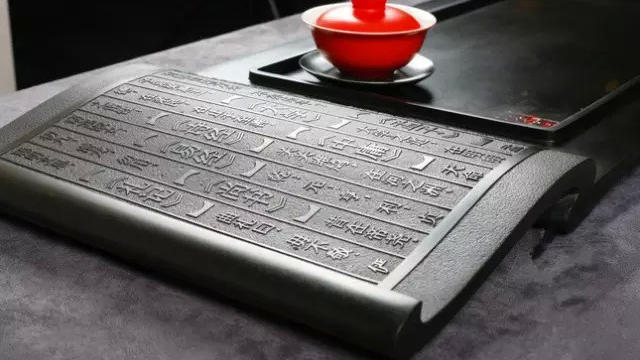(双语)《2016中国的航天》白皮书(6)
作者:英文巴士
来源:英文巴士
2017-01-05 10:12
Manned spaceflight
发射“天舟一号”货运飞船,与在轨运行的“天宫二号”空间实验室进行交会对接,突破和掌握货物运输和补给等关键技术,为空间站建造和运营积累经验。
China plans to launch the Tianzhou-1 cargo spacecraft to dock with the earth-orbiting Tiangong-2 space laboratory, and research and master key technologies for cargo transport and replenishment to accumulate experience in building and operating a space station.
完成空间站各舱段主要研制工作,开展空间站在轨组装建造和运营。
We aim to complete the main research and development work on the space station modules, and start assembly and operation of the space station.
开展关键技术攻关和相关技术试验验证,提升载人航天能力,为载人探索开发地月空间奠定基础。
We strive to acquire key technologies and conduct experiments on such technologies to raise our manned spaceflight capacity, laying a foundation for exploring and developing cislunar space.
(四)深空探测
Deep-space exploration
继续实施月球探测工程,突破探测器地外天体自动采样返回技术。2017年年底,发射“嫦娥五号”月球探测器,实现区域软着陆及采样返回,全面实现月球探测工程“三步走”战略目标。2018年前后,发射“嫦娥四号”月球探测器,实现人类探测器在月球背面首次软着陆,开展原位和巡视探测,以及地月L2点中继通信。通过月球探测工程的实施,开展月表形貌探测和地质勘察,对月球样品进行实验室研究;开展月球背面着陆区地质特征探测与研究,以及低频射电天文观测与研究,深化对月球成因和演化的认知。
China will continue its lunar exploration project, and strive to attain the automated extraterrestrial sampling and returning technology by space explorers. We plan to fulfill the three strategic steps of “orbiting, landing and returning” for the lunar exploration project by launching the Chang’ e-5 lunar probe by the end of 2017 and realizing regional soft landing, sampling and return. We will launch the Chang’e-4 lunar probe around 2018 to achieve mankind’s first soft landing on the far side of the moon, and conduct in situ and roving detection and relay communications at earth-moon L2 point. Through the lunar exploration project, topographic and geological surveys will be implemented and laboratory research conducted on lunar samples; geological survey and research as well as low-frequency radio astronomy observation and research will be carried out targeting the landing area on the far side of the moon for a better understanding of the formation and evolution of the moon.
实施中国首次火星探测任务,突破火星环绕、着陆、巡视探测等关键技术。2020年发射首颗火星探测器,实施环绕和巡视联合探测。开展火星采样返回、小行星探测、木星系及行星穿越探测等的方案深化论证和关键技术攻关,适时启动工程实施,研究太阳系起源与演化、地外生命信息探寻等重大科学问题。
China intends to execute its first Mars exploration operation, and grasp key technologies for orbiting, landing and roving exploration. It plans to launch the first Mars probe by 2020 to carry out orbiting and roving exploration. It will conduct further studies and key technological research on the bringing back of samples from Mars, asteroid exploration, exploration of the Jupiter system and planet fly-by exploration. When conditions allow, related projects will be implemented to conduct research into major scientific questions such as the origin and evolution of the solar system, and search for extraterrestrial life.
(五)航天新技术试验
Experiments on new space technologies
开展新技术试验验证,为航天发展提供技术支撑。
China is to perform experiments on new space technologies to provide solid technological support for its space industry.
研制发射“实践十三号”、“实践十七号”、“实践十八号”、全球二氧化碳监测等技术试验卫星,开展新型电推进、激光通信、新一代通信卫星公用平台等关键技术试验验证。启动空间飞行器在轨服务与维护系统建设,利用多种资源,开展新原理、新技术、新产品在轨试验验证。
China will develop and launch technology experiment satellites, including the Shijian-13, Shijian-17 and Shijian-18, and a global carbon dioxide monitoring satellite, and conduct experiments on key technologies for new electric propulsion, laser communications and common platforms of new-generation communications satellites. It plans to build in-orbit servicing and maintenance systems for spacecraft and make in-orbit experiments on new theories, technologies and products by tapping various resources.
(六)航天发射场
Space launch sites
完善现有航天发射场系统,统筹开展地面设施设备可靠性增长、适应性改造和信息化建设,增强发射场任务互补和备份能力,初步具备开展多样化发射任务的能力。探索推进开放共享的航天发射场建设,形成分工合理、优势互补、有机衔接、安全可靠的新型航天发射体系,持续提升发射场综合能力和效益,满足各类发射任务需求。
China will improve its existing space launch sites by raising the reliability and IT application level and conducting adaptive improvements to ground facilities and equipment, and increasing the complementarity of mission enforcement and backup capacities of space launch sites, equipping them with basic capacities to carry out various launch missions. It will explore and advance the building of space launch sites that are open to cooperation and sharing, form a new space launch system featuring rational division of work, mutual complementarity, smooth coordination, security and reliability. The integrated capacities and functions of space launch sites will be enhanced and exploited to meet various needs.
(七)航天测控
Space TT&C
完善现有航天测控系统,建设运行第二代中继卫星系统,提高航天器测定轨精度,提升在轨航天器测控管理能力,加强测控资源综合运用,提升航天测控资源运行使用效益,构建安全可靠、响应迅速、接入灵活、运行高效、服务广泛的天地一体化航天测控体系。探索发展商业航天测控系统,创新服务模式,加强国际合作和测控联网,构建开放共享的航天测控服务新格局。
China will enhance its existing space TT&C systems. It aims to build and operate a second-generation relay satellite system, raise the accuracy of the orbit determination process for spacecraft, improve its TT&C capabilities in managing in-orbit spacecraft, and strengthen integrated and efficient utilization of TT&C resources, to build a space-ground integrated TT&C network featuring security, reliability, quick response, flexible access, efficient operation and diverse services. It plans to explore the development of commercial TT&C systems, seek new service modes, and intensify international cooperation and networking in the field of TT&C, forming a new TT&C service pattern marked by openness and sharing.











